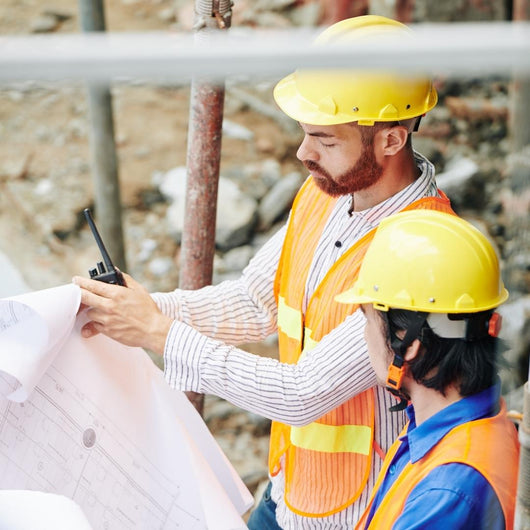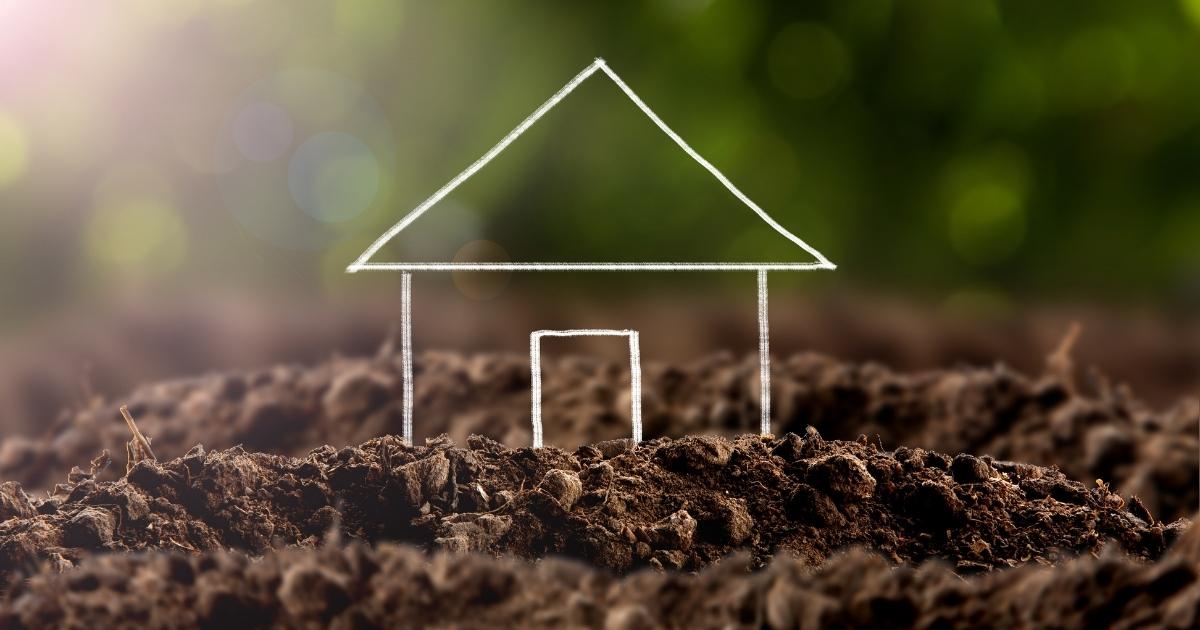
Raw land
Raw land is property that has never been developed before. It won’t have ready access to utilities like power or water and may lack road access.
Buying land to build a house or to develop real estate? This is what you need to check before you sign on the dotted line.
As real estate markets break records for selling speed, many buyers are skipping the house hunt altogether and purchasing land for a new build. But first-time home builders should be prepared to do some legwork.
Buying land that doesn’t work for your plans can turn into a very expensive mistake, very quickly, but the right piece of land can earn purchasers their dream home in the perfect location!
Here’s a checklist of what to look for when buying land to build on in Ontario:

One of the easiest mistakes to make when buying land is not checking the zoning requirements of your prospective property. Zoning requirements outline parameters like the maximum building height, lot coverage, and required distance from the sidewalk. They can also sometimes include restrictions on renovations or additions like garages, pools, or decks.
Zoning and conservation requirements are especially important to check on waterfront properties. A new build is required to be a certain distance from the water, specific to that lot. But if your build must also be set back from the road or hinges on a waterfront deck, you could end up having to drastically modify or shrink your house plans.
Don’t let your dream home plans get compromised by hidden restrictions! There will always be unexpected surprises with any kind of home construction but checking the zoning requirements before you buy land can save you the panic of a redesign – or getting stuck with land that can’t fit your family home.
For example, here in Kingston, Ontario most new homes must be at least 30m (100ft) away from the water edge or flood plain.
To check your lot’s zoning requirements prior to purchase you can:

Land in subdivisions often come with a subdivider’s agreement, also known as restrictive covenants. These are most often prepared to restrict the appearance of large developments or multi-unit residences.
Restrictions might mandate that the building be all brick or stone, or they might limit how far in front of the home a garage can be built, whether it needs to be flush or set back a certain distance from the curb.
Like zoning requirements, subdivider’s agreements can contain some hidden surprises that could seriously disrupt your building plans and your budget. Always include reviewing this document as part of your agreement of purchase to ensure the parameters are consistent with your building plans.
A subdivider’s agreement often cannot be reviewed prior to this point in the purchasing process. A good real estate lawyer can be a huge asset for interpreting the fine print.
When buying land in Ontario, there are two different kinds of properties you’ll come across: raw land and vacant land.

Raw land is property that has never been developed before. It won’t have ready access to utilities like power or water and may lack road access.

Vacant land is serviced or partially serviced by utilities with potentially viable power or water. This kind of property may have existing developments or structures on it.
If you’re buying vacant land in Ontario that has a well, you will want to conduct a well flow rate test and water quality test. A well test can be part of an on-site inspection. Well testing cannot be conducted prior to purchase; it must be done as part of the conditions of your offer. You can ask your realtor or lawyer for a referral to a local testing company.
When it comes to power lines, always remember, you want them close, but not too close! If you view the property or look at photos online, make sure you note the location of the nearest power lines. You don’t want power lines obstructing your view or getting in the way of where you plan to build.
On the other hand, note if there are no power lines as having these set up for your property can be expensive. This is more likely to be the case for raw land.
The property may have to rely on a septic system if it’s not connected to municipal sewer lines. Check the land has enough room for an adequate septic system. Appropriate sizing is determined by the size of the house you’ve planned, the number of bedrooms, number of plumbing fixtures, soil type, and the type of septic system.
Confirm there are no gas lines passing through the property, this can affect where you can build the foundation of your home as well as being a safety concern. In the case of vacant land, also confirm the property was never previously a gas station.

Raw land may lack access to established or well-maintained roads. This means purchasing raw land may require you to build a private road or driveway or pave an existing gravel road. In some cases, this process may also entail building on other privately-owned land to create access.
These are important and costly considerations. Existing roads are well marked on property maps or visible on third-party maps – make sure you check!
A soil test is especially important for raw land because it has never been developed before. Contact a geotechnical engineer to conduct a soil test to ensure the land passes a percolation test – meaning it can properly absorb water and can handle a septic system. You cannot build on land if it fails a soil test.
Sand is one of the worst soil types for a property to have for support if you plan on building. However, the solution is simple, just expensive: double the footings. This is an important cost and planning consideration to pass on to your designer and construction crew. Sand also happens to be one of the best for drainage, which is why it’s used around septic beds, so it does have it’s perks!
Like the well test and subdivider’s agreement, a soil test can’t be completed prior to purchase, it must be part of the agreement of purchase.
Look up the frequency of natural disasters for the property’s region. A history of flooding, tornadoes, wildfires, or earthquakes could increase the cost of your insurance.
If you’re buying land to build a home on from the ground up, this is a great opportunity to consult an engineer and use custom structural design to help your home withstand the impact of these disasters. A geotechnical engineer could also advise you better on where to build to avoid running into issues like snow-melt springs or poor drainage.
Contact your conservation authority to make sure your lot is not environmentally protected – this is especially important for waterfront properties. There may be additional setback requirements from water, protected animal or plant species, or archaeological protection. Environmental protections may restrict you from building on your land or limit the size of your plans.
If you’re buying land to build on, we have two cardinal rules before you get started:
These are the two pain points we tend to see cause the most trouble: time and money. Good luck and check out our socials for more tips on building on and buying land!
Browse our predesigned house plans and see if there is something that catches your eye, or you would like to make some changes to!